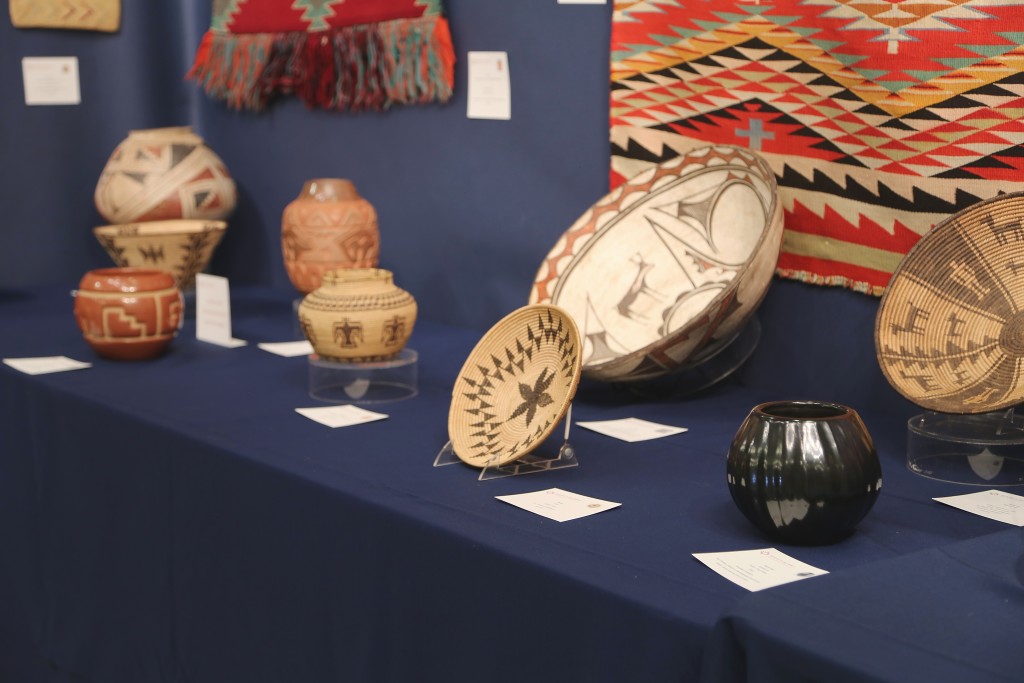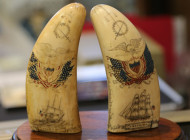By Greg Smith
WASHINGTON, DC — On July 29, the Senate Committee on Indian Affairs voted in favor of sending the Safeguard Tribal Objects of Patrimony Act of 2020 (STOP Act), S. 2165, to the US Senate floor for a broader vote.
The bill would institute an as-yet unknown and unwritten federal process of review and possible seizure on vaguely defined tribal artifacts valued over $1 that are exported out of the United States.
Kim Martindale, president of the Authentic Tribal Art Dealers Association (ATADA), submitted written testimony to the committee outlining a series of major concerns that the bill does not address.
Martindale said that while the bill’s intent — that is to return objects of Native American cultural patrimony, i.e. sacred or ritual objects used in religious ceremonies — is worthy of a passing bill and indeed one that ATADA would support, the current bill in its present, largely unwritten form, is not the correct one to pass.
“The STOP Act represents the first time in the United States’ entire history that it has sought to restrict export of art or cultural heritage,” ATADA wrote in a statement.
ATADA’s objection to the bill states that it “will embargo lawfully owned Indian artifacts, will fail to provide notice to the public of what Indian objects are prohibited from export, will impose burdensome export requirements on very low value items, and allow seizure without constitutional due process.”
The bill is backed by a consortium of tribal interests, including the Acoma tribe, which was involved in a 2016 dispute over a shield that had been stolen from them in the 1970s and reappeared at auction in France. It was eventually returned to the tribe.
In relation to that case and the various versions of the STOP Act that have been introduced since, Martindale does not believe that lumping together legally owned Native American objects with illegal or sacred objects will prevent a situation like that from happening again.
“There’s a fallacy in saying that every object, if it is a historic piece, needs to be reviewed,” Martindale said. “When you look at the largest market for Native American contemporary art, the Indian Market in Santa Fe, that market will be 100 years old soon.”
Native Americans have traded with foreigners since they set foot on the North American continent centuries ago, but they rarely if ever traded ritual objects or those used in religious ceremonies. Still, Martindale argues that every single thing that a Native American made in the past few hundred years will be caught up in the undefined embargo process, ritual or not.
The language in the bill used to define the objects subject to the review process follows definitions laid out in two earlier US cultural patrimony laws, the Native American Graves Protection and Repatriation Act (NAGPRA), which institutes a return process for sacred objects from any museum that takes federal funds, and the Archaeological Resources Protection Act (ARPA), which prohibits excavations without permits on federal or tribal land. The bill will affect items of “archeological resources” as defined under ARPA, which will, according to ATADA, ensnare any Native American-made item pre-1920. Under NAGPRA, it pulls in “cultural items,” which pertains to associated and unassociated funerary objects (things found with remains or reasonably assumed to have been buried with remains at one point), sacred objects and objects of cultural patrimony, a broad term defined as an “object having ongoing historical, traditional or cultural importance central to the Native American group or culture itself.”
ATADA says this “gives limitless scope to the objects that cannot be exported. [It] fails to utilize an established Customs system with clear rules and substitutes a cumbersome one where criteria will be secret, known only to Tribes.”
Still at other points, the STOP Act diverges with NAGPRA.
“Under STOP, tribes have no need to show affinity or substantiate that an object may be claimed,” ATADA wrote in regards to the review process that is immune from any explanation at all should an item be seized, including public records or Freedom of Information Act requests.
When posed with the scenario of what happens if a German resident came over to the United States and bought an artifact to bring home, Martindale was unable to confidently illustrate what their experience might look like.
“That’s part of the issue, it’s not defined,” he said. “They’re saying it will be written after the bill is passed. But if you’re from Germany and you buy something for $2 that’s completely legal to own and you want to take it home, the process that you might have to go through for a $2 object is so extensive. It has to go for a review and be looked at. You’re going to say, ‘Why am I buying Indian art? The process is too difficult.’”
In its current form, the bill requires any Native American-made object over $1 in value to be submitted to a review process prior to being exported. That object will be held up for an undefined amount of time while it is reviewed. The review process will send images of the object to a representative from one of the 574 federally recognized tribes, who will decide if it is an object of cultural patrimony. If it is not, it will be released for export. If it is, it will be seized without explanation.
Martindale says that hopes on a quick and speedy timeline on the review process are largely wishful.
“It’s going to come down to every single piece needing to be reviewed, and the people that are pushing this bill are saying that it’s an easy thing to do. ATADA has voluntarily returned 250 pieces to the tribes over the past years and it’s not a quick process. Sometimes it takes six months to a year, and that’s just with several hundred pieces over a few years. But what if every piece going through customs goes through that process? Who does that? How long does it take? These are all things that aren’t necessarily considered by this bill.”
Martindale, who is involved in producing numerous shows for contemporary and historic Native American material, says the wide-reaching impact of this bill will be negative not only for collectors and sellers of this material, but in it’s current form, could lead to implications for contemporary makers.
“Part of my goal is to develop the Indian art marketplace,” Martindale said. “We live in an international marketplace now and we want Native American art to be enjoyed by people all over the world. That’s something we work hard to build. A bill as wide and undefined as this will impact already struggling artists and makers.”
ATADA and the proponents of the STOP Act reached a compromise on an export bill in 2018, which included tribal review, strict violator penalties and a value threshold that would not constrict low-value items. That compromise was scratched by the bill’s proponents with the reintroduction of the 2019 STOP Act.
It is unknown when the bill will reach the Senate floor for a vote, but ATADA is urging all dealers and collectors to contact their representatives.
Martindale said he’d like to head back to the drawing table where a sensible Native American artifact bill can be crafted.
“It should have proper limitations on what should be viewed and what shouldn’t be viewed, as well as price consideration. It should be run through the system that we have for export already, rather than trying to create a new system,” Martindale said.




